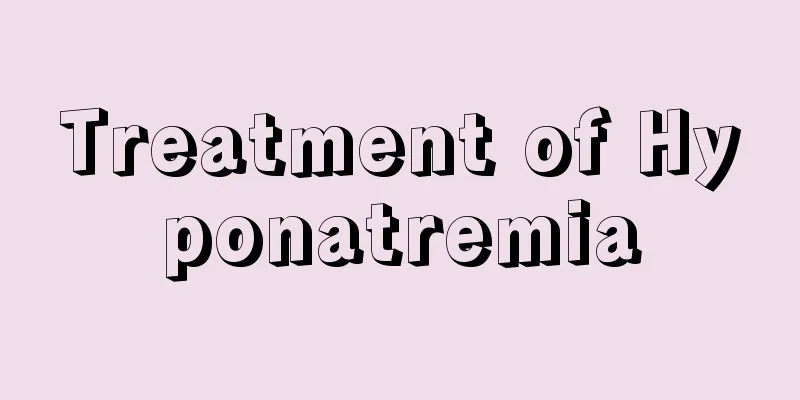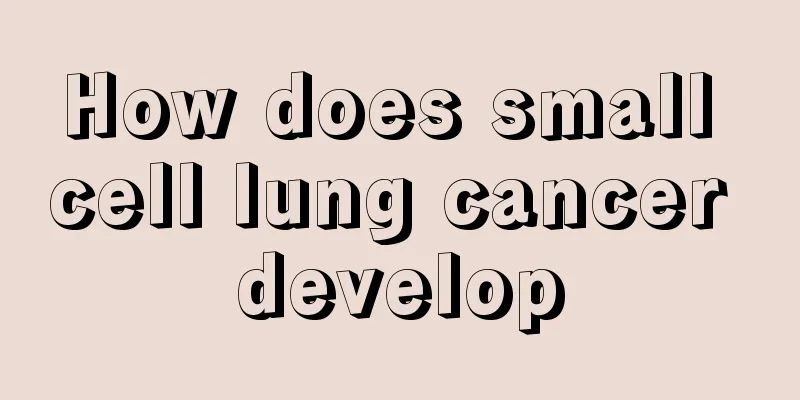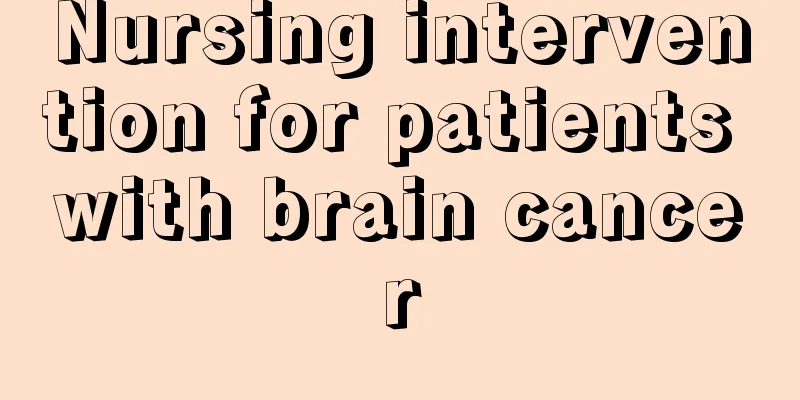Treatment of Hyponatremia

|
Hyponatremia is a disease that is easy to occur in the human body. There are many adverse reactions in the human body when suffering from this disease, such as headache, muscle soreness, intestinal discomfort, respiratory failure, or drowsiness, etc. Severe cases of hyponatremia may even cause death. Therefore, people need to pay special attention to this disease. The following is a detailed introduction on how to treat hyponatremia. Symptomatic treatment] 1. Treatment goal of acute hyponatremia: to increase blood sodium by nearly 10 mmol/L or to 120-125 mmol/L within a short period of time (4-6 hours). Over the next 24 to 48 hours or longer, serum sodium concentration gradually returns to normal. 3% sodium chloride solution can be dripped intravenously, and diuretics can be injected at the same time to accelerate the excretion of free water, restore blood Na+ more quickly, and avoid excessive volume. 2. For chronic asymptomatic hyponatremia, the first step is to find the cause of hyponatremia and then treat it accordingly. For patients whose cause cannot be eliminated temporarily, measures such as limiting water intake and inhibiting ADH release to increase solute intake or excretion can be adopted. Chronic symptomatic hyponatremia is treated with sodium supplementation and diuretics to increase free water excretion. 3. Sodium-losing hyponatremia is common in gastrointestinal and renal sodium loss. Treatment is mainly with sodium supplementation. For mild cases, only saline or sodium chloride tablets can be taken orally, and water should be drunk to restore blood volume. In severe cases, normal saline or high-concentration saline is given intravenously. It should be noted that such patients should not be given glucose water, otherwise hyponatremia will be aggravated. [Drug treatment] 1. Treatment goal of acute hyponatremia: to increase blood sodium by nearly 10 mmol/L or to 120-125 mmol/L within a short period of time (4-6 hours). Over the next 24 to 48 hours or longer, serum sodium concentration gradually returns to normal. 3% sodium chloride solution can be dripped intravenously, and diuretics can be injected at the same time to accelerate the excretion of free water, restore blood Na+ more quickly, and avoid excessive volume. 2. For chronic asymptomatic hyponatremia, the first step is to find the cause of hyponatremia and then treat it accordingly. For patients whose cause cannot be eliminated temporarily, measures such as limiting water intake and inhibiting ADH release to increase solute intake or excretion can be adopted. Chronic symptomatic hyponatremia is treated with sodium supplementation and diuretics to increase free water excretion. 3. Sodium-losing hyponatremia is common in gastrointestinal and renal sodium loss. Treatment is mainly with sodium supplementation. For mild cases, only saline or sodium chloride tablets can be taken orally, and water should be drunk to restore blood volume. In severe cases, normal saline or high-concentration saline is given intravenously. It should be noted that such patients should not be given glucose water, otherwise hyponatremia will be aggravated. Typical symptoms The clinical manifestations and severity of hyponatremia depend on the rate at which blood Na+ and blood sodium decrease. When blood Na+ is above 130mmol/L, it rarely causes symptoms. When Na+ is between 125 and 130 mmol/L, gastrointestinal symptoms occur. When the blood sodium drops below 125mmol/L, cerebral edema is likely to occur. The main symptoms at this time are headache, drowsiness, muscle cramps, neuropsychiatric symptoms and reversible ataxia. If cerebral edema worsens further, brain herniation, respiratory failure, and even death may occur. [Other symptoms] If hyponatremia occurs within 48 hours, it is very dangerous and can quickly cause convulsions, coma, respiratory arrest or death, which can result in permanent neurological damage. [Diagnosis basis] 1. Based on clinical manifestations and determination of electrolytes such as blood sodium. 2. Hyponatremia in patients with low body volume is mainly caused by absolute or relative lack of body fluid. Low or falling blood pressure, poor skin elasticity, and laboratory tests showing a slight increase in blood urea nitrogen and creatinine all support the diagnosis. |
<<: Difficulty breathing and chest discomfort
Recommend
There is a bone bump on the heel
It is said that only the feet know whether the sh...
Why do I keep getting oral ulcers?
Oral ulcers are a common disease and are related ...
How to use interferon
Interferon is essentially a glycoprotein with a h...
How to wash your face to whiten it
I believe everyone wants to have a fair and beaut...
What kind of shoes are suitable for sweaty feet?
With the improvement of living standards, in toda...
How to eat after prostate cancer surgery
For men, if they have prostate cancer, their qual...
What is the reason for the protruding bones on the feet
If the bones on your feet appear to be protruding...
What is the correct way to use makeup remover
It takes a long time to create an exquisite makeu...
Can brain cancer cause nose bleeding?
Generally speaking, some brain tumor patients wil...
What to do if you have cranial nerve spasm
Cerebral vascular spasm is a very common brain di...
How to drink milk in the most nutritious way? The correct way to drink milk
Milk is a good source of calcium in daily life, b...
How to remove acne scars more effectively
Acne scars cause a lot of distress to many people...
What are the effects and functions of yellow chalcedony?
Jewelry made of chalcedony is very popular. Many ...
What is the normal value of serum calcium? What are the impacts?
The body's health level can be reflected by m...
How to treat congenital scoliosis, choose the method according to the situation
There are two types of treatments for congenital ...









